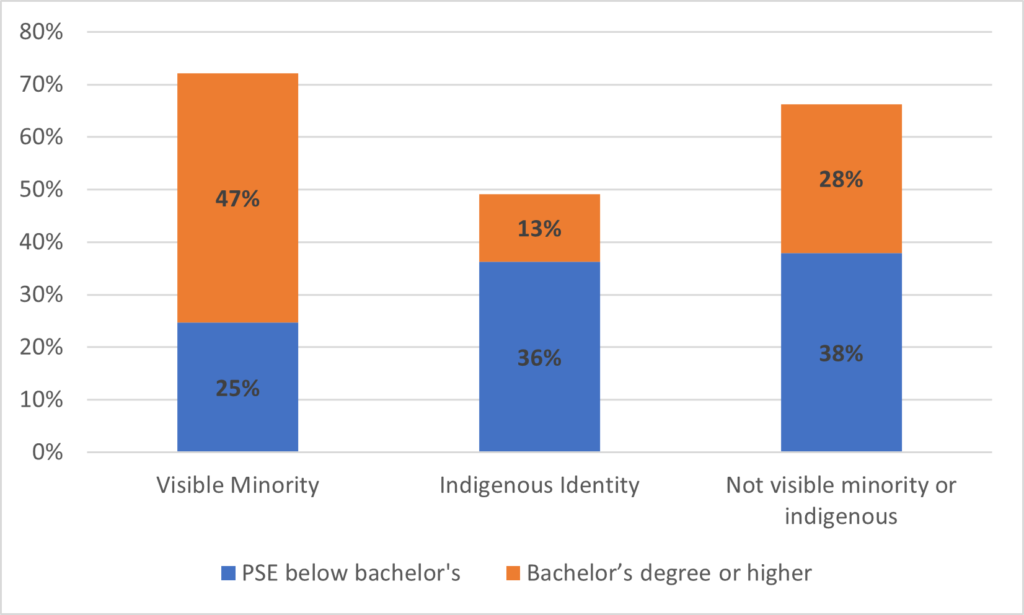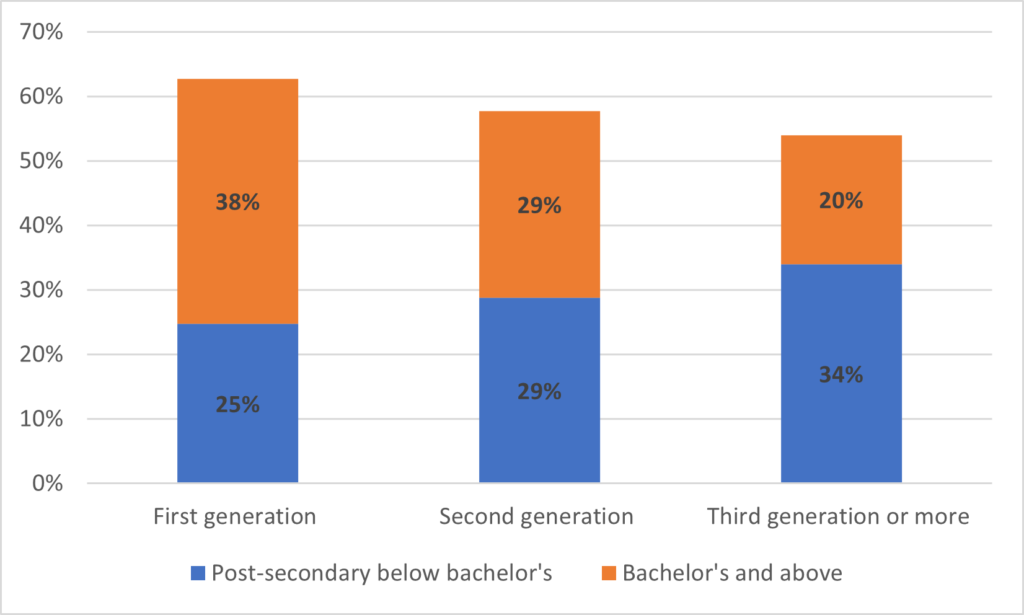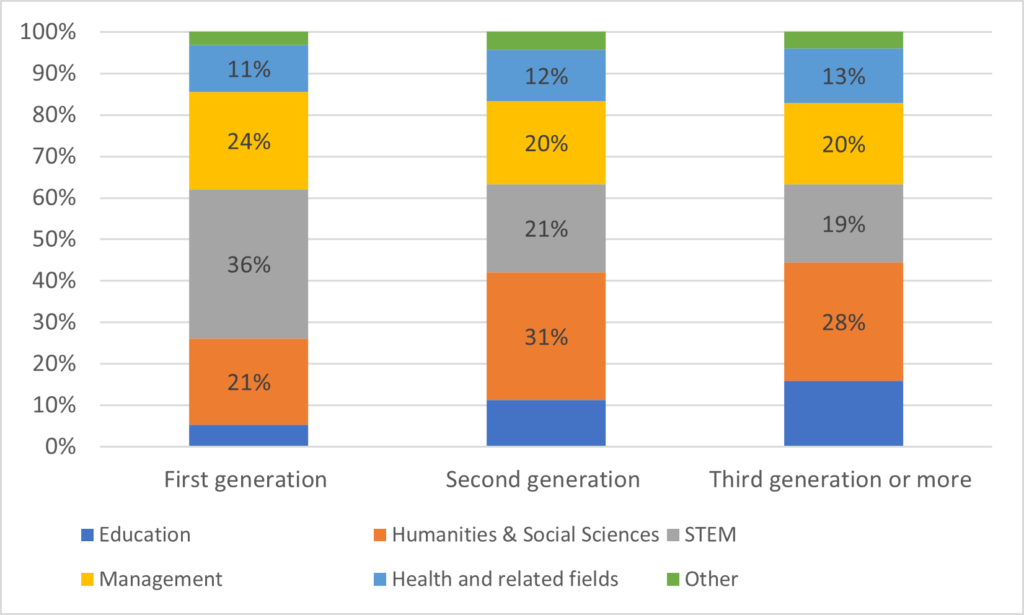Usher: The EDI Hiring Bulge
2023/02/10 Leave a comment
Good analysis and myth destroying by Alex Usher:
A couple of days ago on the website Minding the Campus, a product of the National Association of Scholars (one of those Alan Bloom-loving revere-the-classics, free-exchange-of-ideas, but no-not-those-kinds-of-idea outfits) a research associate named John Sailer posted a list of academic jobs that were being advertised at The Ohio State University (you have to include the “the”. It’s a rule.) as an example of “political activism.” Here’s the meat of the post:
[OSU’s] RAISE initiative (extends to fields that have little connection with DEI. The university is currently seeking three STEM professors—in chemistry, mathematics, and physics—who will “study issues relevant to educational equity.” One cluster hire on the social determinants of health includes roles in medicine, nursing, and engineering. Successful candidates for these jobs must show “a demonstrated commitment to diversity and inclusive excellence” and submit “a brief DEI narrative describing commitment to improving inclusive excellence” and demonstrating how their research focuses on “improving health equity.”
Many of Ohio State’s humanities jobs, meanwhile, now focus exclusively on race. The history department currently lists just two positions: “Contemporary African American History” and “African American History to 1820.” The Department of Comparative Studies lists three: “Indigenous Knowledge,” “Race, Science, and Technology,” and “Race and Health Equity.” The Department of French and Italian is hiring only one professor, an “Assistant Professor of French and Francophone Studies with a specialization in Black France.”
The university’s indigenous studies cluster hire—which is independent of the RAISE initiative—includes a role in “Indigenous Feminisms,” calling for a professor who will study “gendered and sexualized disparities alongside the dispossessions of settler colonialism” and “the potentials of women- and two-spirit or queer-led innovations in preserving embattled minority and colonized food/health/body/eco cultures.” Another role in the cluster is more novel, “Indigenous Siberian Studies,” a scholar in the Department of Slavic and East European Languages and Cultures who will “explore questions about indigenous people’s knowledges and cultural practices” related to “race, ethnicity, gender and sexuality, im/mobility, health, food, and environment, in imperial/post-imperial, communist/post-communist, or comparative contexts.”
The argument here is an anti-EDI one, but it is different from the ones you usually see. It is not “EDI is unjust reverse discrimination” as much as it is “EDI is changing and perhaps perverting the nature of academic disciplines.” The argument was pitched to specialists, claiming that their specialty is changing and perhaps leaving them behind.
So, has OSU been “captured” by people who want to make it Subaltern U? Well, in the first place, caution is warranted because we don’t have a good picture of how many jobs are up for grabs at OSU. The article refers to about 10 positions. My guess is that OSU – which is the fourth-largest institution by enrolment in the United States and over 2,000 permanent faculty members – hires over 100 academic staff a year. Question number one about this set of examples therefore is: “how representative is this list?” And if it represents just 10% of new staff, then why should anyone consider it a big deal?
In the second place: ask yourself whether all these positions are misguided in the way Sailer charges. A French department that doesn’t cover francophone Africa would be very limited, given that’s where over half of all French-speaking people live. Physics departments that aren’t looking for people who can lead outreach and support programs for Black students are increasingly rare these days. Specializations in Indigenous Siberian Studies might sound a bit obscure, but there’s any number of Indigenous studies programs focusing on North America, so it’s not obvious to me why offering similar treatment to indigenous cultures in Russia is illegitimate from an academic POV, unless you start from the perspective that certain cultures aren’t worth studying (there is, admittedly, a question about whether a position in Indigenous Siberian Studies located in Columbus, Ohio will bring in the necessary students and research dollars to pay its way, but that’s the department Chair’s call).
In any event, colour me unpersuaded that the examples Sailer draws on to represent a wave of “misguided priorities” at the institution. The job descriptions are much less radical that the author seems to think, and there’s no sense here of whether the author is cherry-picking (for what it’s worth, the OSU program through which these scholars are being hired was designed to bring in 50 scholars between 2020 and 2030, which at an institution the size of OSU is peanuts). It read like cherry-picking and not of a particularly sophisticated variety. But what was interesting to me is the number of twitter accounts from people I would normally qualify as pretty sensible tut-tutting about “the state of academia” exposed by this piece.
And I kind of get it. If one isn’t quite alive to the extent of selective argumentation going on here (at most universities, 10 appointments is a pretty big fraction of annual hiring), and one interprets this kind of change as being “the shape of things to come”, then one might conclude that a wide variety of academic fields are being threatened with radical change in the sense that the focus of inquiry is changing completely (e.g. from France to Africa in the case of the French Studies, from Moscow to Siberia in the case of Russian studies). And loyalty to discipline is a consistent theme amongst academics. It’s not difficult to see why something that seemed to be an attempt to alter disciplinary foci might seem threatening.
But the evidence that this is a permanent shift is thin. Academia goes through cycles. Right now, the cycle is one where many institutions, across a wide range of disciplines, are either trying to reach out to undergraduates from under-represented groups, or incorporate non-Western perspectives, or both. This is a long and ongoing process, mainly because demand for scholars who can do such outreach or conduct effective research in these areas presently outstrips current supply. It is not about making universities totally devoted to Subaltern studies (though this is pretty clearly what the author of this piece wanted readers to think); it is about a one-time Big Push to make sure under-represented students and previously neglected areas of studies have a larger place in the academy – sufficiently large, in fact, that maintaining strength in these areas no longer requires special hiring initiatives but is “par for the course”. That’s necessarily going to create a “bulge” in hiring to bring numbers up to that level: significant in the short-term, but less so in the long-term.
Anyways, if you’re tempted to get angry or despondent about a hiring story like this, just remember: it’s very likely that the extent of the phenomenon is inflated, and even to the extent it is not, the duration of the phenomenon is probably limited too.
Source: The EDI Hiring Bulge




